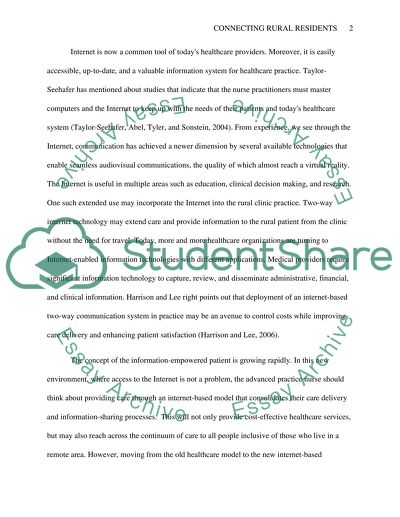Cite this document
(“Connecting Rural Residents to the Nurse Practitioner via Two-Way Essay”, n.d.)
Connecting Rural Residents to the Nurse Practitioner via Two-Way Essay. Retrieved from https://studentshare.org/miscellaneous/1534715-internet-and-healthcare
Connecting Rural Residents to the Nurse Practitioner via Two-Way Essay. Retrieved from https://studentshare.org/miscellaneous/1534715-internet-and-healthcare
(Connecting Rural Residents to the Nurse Practitioner via Two-Way Essay)
Connecting Rural Residents to the Nurse Practitioner via Two-Way Essay. https://studentshare.org/miscellaneous/1534715-internet-and-healthcare.
Connecting Rural Residents to the Nurse Practitioner via Two-Way Essay. https://studentshare.org/miscellaneous/1534715-internet-and-healthcare.
“Connecting Rural Residents to the Nurse Practitioner via Two-Way Essay”, n.d. https://studentshare.org/miscellaneous/1534715-internet-and-healthcare.


